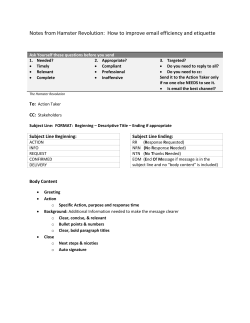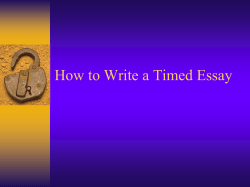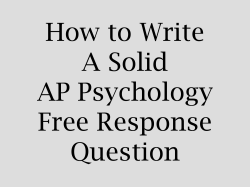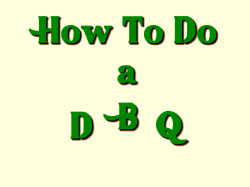
“ The Lives of Children During The Revolutionary War”
DAR American History Essay Contest 2013 2013--2014 “The Lives of Children During The Revolutionary War” By notifying Ms. Spivey, teachers may have the essays picked up or they can be mailed to: Ms. Gwen Spivey 803-474-3431 gwenrs@comcast.net Nancy Carson Library Research Guide www.abbe www.abbe--lib.org Member ABBE Regional Library System Step-by-step Guide To Writing Bibliography Entries (MLA) If you were to use a book called South Carolina and the American Revolution by John W. Gordon, you would follow the example below. Step One: - author’s name (last name first, followed by the first name, and then the middle name) followed by a period. Gordon, John W. Step Two: add the title (underlined or in italics) followed by a period. Gordon, John W. South Carolina and the American Revolution . Step Three: add the location of the publishing company (place of publication) followed by a colon. Gordon, John W. South Carolina and the American Revolution. Columbia, SC : Step Four: add the name of the publishing company followed by a comma. Indent if you are going to a second line. Gordon, John W. South Carolina and the American Revolution. Columbia, SC : University of South Carolina Press, Step Five: add the copyright date and a period. Gordon, John W. South Carolina and the American Revolution. Columbia, SC : University of South Carolina Press,2003. 2013-2014 AMERICAN HISTORY ESSAY CONTEST RESOURCE LIST Title: “The Lives of Children During the American Revolution” Topic: Pretend you are a boy or girl during the colonial fight for freedom. Using historical facts, discuss how the war is affecting your life. BOOKS: 1). Beller, Susan Provost. The revolutionary War. New York: Benchmark Books, 2002. (see timeline on page 84 and "Life on the Homefront" on pgs. 70-75) 2). Burt, Barbara., The Eve of Revolution. Washington, DC: National Geographic Society, 2003. 3). Carter, Allen R. The American Revolution. New York: Franklin Watts, 1992 4). Cohn, Scotti. Liberty's Children: Stories of Eleven Revolutionary War Children. Guilford, Connecticut: Twodot, 2004. 5). Meltzer, Milton. The American Revolution- A History in Their Own Words 1750-1800. New York: Thomas T. Crowell, 1987. (see "Did Polly Set The Sponge for the Bread" pg. 69) 6). Moore, Kay. If You Lived at the Time of the American Revolution. New York: Scholastic, Inc., 1997. 7). Volo, Dorothy Denneen and James M. Volo., Daily Life During The American Revolution. Westport, Connecticut: Greenwood Press, 2003. (see pgs. 71; 110-115; 210-214, 242. 8). Sichel, Marion. History of Children's Costume. New York: Clelsea House Publishers, 1983. 9). Taylor, Dale. Everyday Life in Colonial America from 1607-1783. Cincinnati, Ohio; 1997. 10). Wroble, Lisa A. Kids in Colonial Times. New York: PowerKids Press, 1997. MAGAZINES: 1). "Did You Know." Cobblestone (2000):24-25. 2). "The Armies Clash." Cobblestone (2006 ): 22. (also view "Did You Know" on pgs. 34-35. WEBSITES: 1). American-Revolution-L Archives http://archiver.rootsweb.ancestry.com/th/read/AMERICAN-REVOLUTION/200509/1127485432 2). American Revolution- Life as a Revolutionary War Soldier http://www.ducksters.com/history/american_revolution/life_as_a_revolutionary_war_soldi er.php 3). Black Soldiers in the Revolutionary War http://soldiers.dodlive.mil/2013/02/black-soldiers-in-the-revolutionary-war/ 4). Children and Teenagers in the American revolution http://www.gradesaver.com/johnny-tremain/study-guide/section13/ This summary of the novel Johnny Tremain gives some tips on the life of kids during the war. 5) Families in the Revolution: Patriots in the Countryside http://www.nps.gov/adam/forteachers/upload/newfamily2.pdf (Pages 8 featuring boys life in colonial times and 9 featuring girls might be especially helpful) 6). The Roles of Women in the Revolutionary War\ History of Massachusetts http://historyofmassachusetts.org/the-roles-of-women-in-the-revolutionary-war/ 7). Rufus Landon, Rev. War Drummer .http://www.revolutionarywararchives.org/landon.html 8). Sarah Osborn Recollects Her Experiences in the Revolutionary War http://historymatters.gmu.edu/d/5833/ HISTORICAL FICTION (The use of history in these novels may give some ideas for using historical facts in your writing) 1). Gregory, Kristiana. The Winter of Red Snow- The Revolutionary War Diary of Abigail Jane Stewart.New York: Scholastic, Inc., 1996. 2). Osborne, Mary Pope. Revolutionary War on Wednesday.New York: Random House, 2000. DAR Essay Rules FORM 1. Handwritten, typed, or prepared on a word processor. 2. Use black ink only. 3. When using a computer use non-script font no smaller than 12 point or larger than 14 point (double spaced) 4. The essay must be in your own words. ELEMENTS OF JUDGING 1. 2. 3. 4. 5. 6. Historical accuracy 1-25 Adherence to topic 1-15 Organization of material 1-15 Originality 1-10 Interest 1-10 Spelling and punctuation 1-10 7. Grammar 1-10 8. Bibliography 1-5 9. Completeness of title page 1-5 Absence of bibliography or title page will disqualify essay. ** numbers indicate point value of each category. Length of Essay Grade 5: 300-600 words Grades 6th-8th: 600-1,000 words Do Not count the words on your title page or in your bibliography. All other words count. Dates count as one word. Sample Title Page “The Lives of Children During the Revolutionary War” John Smith 1 My Street North Augusta, SC 29841 803-111-0000 itsmyessay@myhouse.org Name of My School 8th Grade Martintown Road Chapter, DAR 495 words Please note that an incorrect title page will eliminate the essay from being judged according to the national DAR Society’s rules. Title Page must be as follows: “”The Lives of Children During The Revolutionary War” Contestant’s full name and address (include street, rural route, or PO box, city, state, and zip code) Contestant’s telephone number with area code and e-mail address if available Name of the contestant’s school with grade level Name of sponsoring DAR chapter Number of words in essay NOTE: School contact information may be substituted if a school prohibits release of student contact information. **Failure to include all of the above information will result in the disqualification of your essay” LOCAL DAR CHAPTERS Aiken: The Henry Middleton Chapter, NSDAR Barnwell: General John Barnwell Chapter, NSDAR Edgefield: Old Ninety-Six District, NSDAR North Augusta: Martintown Road Chapter, NSDAR Trenton: Trenton Chapter, NSDAR Contact: Ms. Gwen Spivey 803-474-3431 gwenrs@comcast.net DAR Bibliography Guide Book references consist of the following information when available: Author last, Author first. Title. Editor, Compiler and/or Translator. Edition. Vol. Series name. Place of publication: Publisher, date of publication. Article references consist of the following information when available: Author last, Author first. “Title of article.” Name of the periodical. Series number or name. Vol.Issue (Date of publication): page numbers. Book - single author Meltzer, Milton. The American Revolutionaries. New York: Thomas Y. Crowell, 1987. `````````````````````````````````````````````````````````````````````` . Book - anonymous A Guide to Our Federal Lands. Washington: Natl. Georgraphic Soc., 1984. Encyclopedia article Hickey, Donald R.. “War of 1812 (1812-15).” American Heritage Encyclopedia of America. New York: American Historical Society, Inc. 1934. Article from a journal Nelson, Daniel A. “Ghost Ships of the War of 1812.” National Geographic (1983): 289-313. Work in an anthology Rubinstein, Arye. “Children with AIDS and the Public Risk.” Aids: Facts and Issues. Ed. Victor Gong and Norman Rudnick. New Brunswick: Rutgers UP, 1986. 99-103. Article in a multi-volume series Miller, Ruth. “Emily Dickinson.” Dictionary of Literary Biography. Ed. Joel Myerson. Vol. 1. Detroit: Gale, 1978. 34-45. Electronic references consist of the following information when available: Author last, Author first. “Title of poem, short story or similar short work within a larger project, database or periodical.” Title of the scholarly project database, periodical or professional or personal site. Editor or Compiler of project.Version of source or volume and issue number. Day Month Year of publication or last update. Name of sponsoring institution or organization. Day Month Year of access <URL>. Journal article in database Needham, George. “Institutions Changing Under the Force of New Information Technology.” Generations full-text database 21.3 (1997). Expanded Academic Index. 14 Feb. 1998 <http://infotrac.galegroup.com/itweb/usclibs/>. Professional site Portuguese Language Page. U of Chicago. 1 May 1997 <http://humanities.uchicago.edu/romance/port/>. General website (be sure to evaluate content before using in scholarly writing) “The Building of the Transcontinental Railroad.” History Central.com. 30 May 2009 <http://www.historycentral.com/ railroad/trans.html>. These examples are based on: Gibaldi, Joseph. MLA Handbook for Writers of Research Papers. New York: Modern Language Association of America, 1995. Gibaldi, Joseph. MLA Style Manual and Guide to Scholarly Publishing. New York : Modern Language Association of America, 1998. MLA Style 17 Oct. 2000. The Modern Language Association of America. 18 May 2001 <http://www.mla.org>. “MLA Works Cited Format (Modern Language Association)” SIRS Knowledge Source. Nancy Carson Library North Augusta, SC. 21 May 2001 <http:// www.sirs.com/>.
© Copyright 2025













